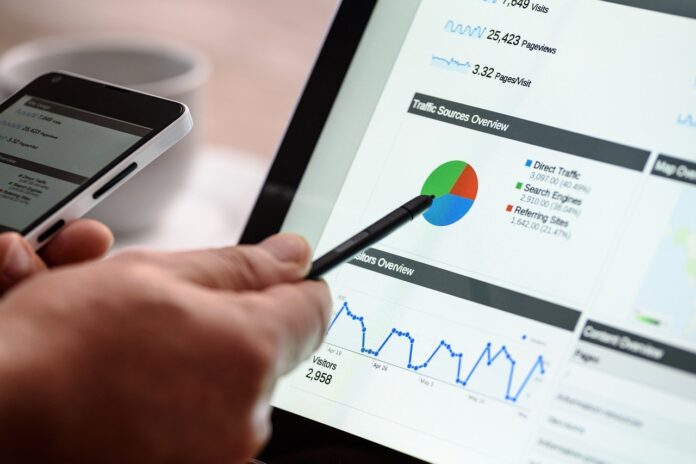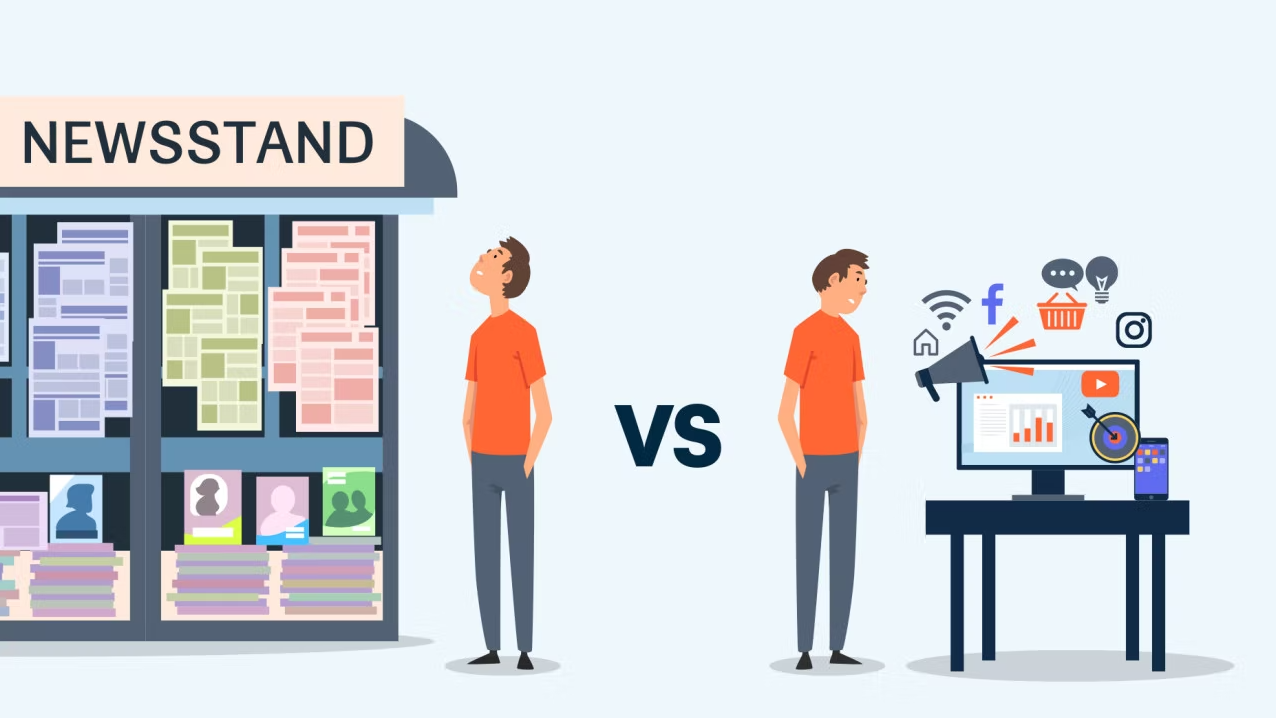Whether digital marketing has completely thrown conventional methods of marketing, advertising, and business promotion out of the game, we will reveal to you in the following blog.
The debate over which type of marketing is more effective and why has been going on for several years now, and while traditional marketing records drastic declines, digital marketing continues to grow and expand rapidly.
However, you should be careful and thoughtful, because the drastic popularity and certainly the effectiveness of digital marketing does not mean that you should eliminate all components of conventional marketing and its promotion methods from your marketing strategy at all costs.
In this blog, we are going to compare digital and traditional marketing, and we will try to cover this topic in a way it deserves to be covered in more detail and by explaining all pros and cons.

If you ask one part of the public or one part of marketing experts they will probably say that traditional marketing hardly exists and that it is dying out, but we would disagree with that claim, or we wouldn’t agree completely. Yes, digital marketing has more than obvious advantages, significantly fewer restrictions, and is more accessible to people and more affordable to business owners, but in general, both conventional and digital marketing have their advantages and disadvantages and we think that you should always see both sides before you create your marketing strategy. The strengths and weaknesses of both sides should be considered, analyzed, and used accordingly. In this blog we will not try to advocate for either side or convince you that digital marketing is superior, Our intention is to present you with the important facts so that you can come to your own conclusion.
Without further ado, let’s explain and bring you closer to these two terms.

The most recognizable examples of traditional marketing are newspaper ads, business cards, billboards, posters, flyers, TV and radio commercials, and more. We have to acknowledge that some of these marketing channels have their benefits and significant impact on brand recognition and sale in general, but the downside of it is the cost. A monthly rental of a billboard or 15 seconds of advertising on television costs a small fortune these days. Also, these types of advertising give you almost no insight into the success of your marketing campaign. So there are no tools to check how many people are interested in your TV ad, billboard, or newspaper ad. You can only assess this after sufficient amounts of time have passed by whether or not your sales or customer interest in your services will increase. But it is a rather unreliable evaluation method that requires time and patience.
On the other hand, digital marketing includes advertising on the Internet, social platforms, product presentation through a website, webshops, Google advertising, email marketing, and a number of other opportunities that the Internet and digital channels provide. It is also important to note that digital marketing, like digital technologies themselves, is developing constantly and very quickly, and constantly creates new ways to get through to customers.

Digital marketing works fast, paves the very paths that you need to reach the desired clientele, offers a whole range of ways to promote your services and products at a very reasonable cost, and provides detailed insight into how successful (or not) your marketing campaign has been, which is very important because it provides insight into the mistakes you’ve been making that you can quickly fix, before the launch of the next campaign and that way prevent you from making same mistakes. This way, digital marketing saves you money and provides essential information about what the market is looking for and where your focus should be.
What is inevitable is that without traditional marketing, which has been developing for decades, there would be no digital either, so sometimes it is difficult to draw a line between these two terms.
Nowadays, in the digital age we live in, most people who opt for traditional marketing choose it because of the fact that it has been around for decades and is therefore easier to understand. People still read magazines, glance at billboards, and some of them still collect business cards, and for some of those people that will hardly change, at least not anytime soon. What they very often don’t understand are its limitations, which have become more visible with the development of its digital offspring. The results of traditional marketing are difficult or completely immeasurable, and its reach is quite limited, especially if we compare it with digital marketing. Another of its problems is the fact that it is not available to everyone because a lot of money needs to be allocated for advertising in the relevant media. And finally, the biggest problem with traditional marketing is that it does not allow direct interaction with the audience, which has proven to be one of the key success factors of digital marketing.
Digital marketing, on the other hand, provides the possibility of a simple and detailed measurement of the results, which is very important in order to make each subsequent campaign more successful. The audience to which a message can be sent through digital marketing is unlimited, but at the same time, it gives you the opportunity to determine the target group that is most important to you. What is the biggest limitation of traditional marketing represents one of the most significant possibilities of digital, which is the ability to communicate directly with your audience, develop a relationship and get information from them that is important for improving your business. In addition to providing a huge number of different channels for communication with your users and consumers, digital marketing is much more accessible to small and micro businesses, because it does not require a huge budget, and every dinar you invest is far more effective.

To conclude, digital marketing has visible advantages and continues where the traditional one left off a long time ago, however, this does not mean that traditional marketing should be excluded in total, no one said that we have to choose. The ideal solution would be to create a balance depending on your business needs, industry branch, plans, and possibilities.
We hope that in this blog we have equipped you with all the necessary information about digital and traditional marketing, which will help you to create a successful marketing campaign, which will most effectively serve the needs of your business.







